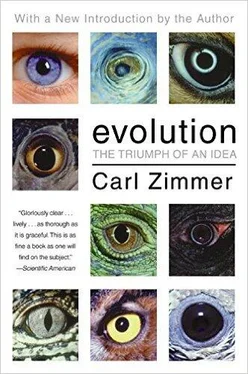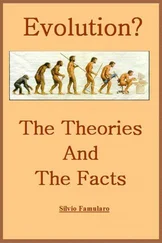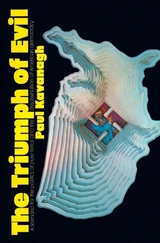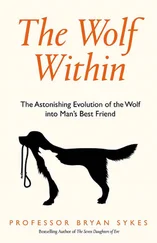Ward PD. The call of distant mammoths: Why the ice age mammals disappeared. New York: Copernicus, 1997.
—. The end of evolution: On mass extinctions and the preservation of
biodiversity. New York: Bantam Books, 1994.
— . Montgomery DR, Smith R. “Altered river morphology in South
Africa related to the Permian-Triassic extinction.” Science, 2000, 289:1740–1743.
Wilson EO. The diversity of life. Cambridge, Mass.: Belknap Press, 1992.
CHAPTER 8: COEVOLUTION: WEAVING THE WEB OF LIFE
Barlow C. The ghosts of evolution: Nonsensical fruits, missing partners, and other evolutionary anachronisms. New York: Basic Books, 2001.
Brodie ED, III, Brodie ED, Jr. “Predator-prey arms races and dangerous prey.” Bioscience, 1999, 49: 557–568.
Buchmann SL, Nabhan GP. The forgotten pollinators. Washington, D.C.: Island Press, 1996.
Currie CR, Mueller UG, Malloch D. “The agricultural pathology of ant fungus gardens.” Proceedings of the National Academy of Sciences, 1999, 96: 7998–8002.
Darwin C. On the various contrivances by which British and foreign orchids are fertilised by insects, and on the good effects of intercrossing. London: John Murray, 1862.
DeMoraes CM, Lewis WJ, Pare PW, Alborn HT, Tumlinson JH. “Herbivore-infested plants selectively attract parasitoids.” Nature, 1998, 393: 570–573.
Diamond J. “Ants, crops, and history.” Science, 1998, 281: 1974–1975.
Ehrlich PR, Raven PH. “Butterflies and plants: A study in coevolution.” Evolution, 1964, 18: 586–608.
Evans EP. The criminal prosecution and capital punishment of animals. London: Faber & Faber, 1987.
Farrell BD. “ ‘Inordinate fondness’ explained: Why are there so many beetles?” Science, 1998, 281: 555–559.
Georghiou GP, Lagunes-Tejeda A. The occurrence of resistance to pesticides in arthropods. Rome: UN Food and Agriculture Organization, 1991.
Melander AL. “Can insects become resistant to sprays?” Journal of Economic Entomology, 1914, 7: 167–173.
Mueller UG, Rehner SA, Schultz TR. “The evolution of agriculture in ants.” Science, 1998, 281: 2034–2038.
Murray DR. Seed dispersal. Sydney & Orlando: Academic Press, 1986.
National Research Council (U.S.). Committee on Strategies for the Management of Pesticide Resistant Pest Populations. Pesticide resistance: Strategies and tactics for management. Washington, D.C.: National Academy Press, 1986.
Pimentel D. Techniques for reducing pesticide use: Economic and environmental benefits. Chichester, England & New York: Wiley, 1997.
— . Lach L, Zuniga R, Morrison D. “Environmental and economic costs of nonindigenous species in the United States.” Bioscience, 2000, 50: 53–65.
—. Lehman H. The pesticide question: Environment, economics, and
ethics. New York: Chapman & Hall, 1993.
Sheets TJ, Pimentel D. Pesticides: Contemporary roles in agriculture, health, and environment. Clifton, N.J.: Humana Press, 1979.
Thompson JN. The coevolutionary process. Chicago: University of Chicago Press, 1994.
von Helversen D, von Helversen O. “Acoustic guide in bat-pollinated flower.” Nature, 1999, 398: 759–760.
Winston ML. Nature wars: People vs. pests. Cambridge, Mass.: Harvard University Press, 1997.
CHAPTER 9: DOCTOR DARWIN: DISEASE IN THE AGE OF EVOLUTIONARY MEDICINE
Carrington M, Kissner T, Gerrard B, Ivanov S, O’Brien SJ, Dean M. “Novel alleles of the chemokine-receptor gene CCR5.” American Journal of Human Genetics, 1997, 61: 1261–1267.
Chadwick D, Goode J. Antibiotic resistance: Origins, evolution, selection, and spread. New York: Wiley, 1997.
Cohen J. “The hunt for the origin of AIDS.” Atlantic Monthly, 2000, 286: 88–103.
Ewald P. The evolution of infectious diseases. Oxford: Oxford University Press, 1997.
Farmer P. “Social inequalities and emerging infectious diseases.” Emerging Infectious Diseases, 1996, 2: 259–269.
Gao F, Bailes E, Robertson DL, Chen Y, Rodenburg CM, Michael SF, et al. ‘Origin of HIV-1 in the chimpanzee Pan troglodytes troglodytes.’ Nature, 1999, 397: 436–441.
Garrett L. Betrayal of trust: The global collapse of public health. New York: Hyperion, 2000.
Hahn BH, Shaw GM, De Cock KM, Sharp PM. ‘AIDS as a zoonosis: Scientific and public health implications.” Science, 2000, 287: 607–614.
Lawrence JG, Debman H. “Molecular archaeology of the Escherichia coli genome.” Proceedings of the National Academy of Sciences, 1998, 95: 9413–9417.
Levy SB. The antibiotic paradox: How miracle drugs are destroying the miracle. New York: Plenum Press, 1992.
— . “The challenge of antibiotic resistance.” Scientific American, 1998, 278: 46–53.
Nesse RM, Williams GC. Why we get sick: The new science of Darwinian medicine. New York: Times Books, 1994.
Ploegh HL. “Viral strategies of immune evasion.” Science, 1998, 280: 248–253.
Stearns SC. Evolution in health and disease. Oxford & New York: Oxford University Press, 1999.
Weiss RA, Wrangham RW. “From Pan to pandemic.” Nature, 1999, 397: 385–386.
Witte W. “Medical consequences of antibiotic use in agriculture.” Science, 1998, 279: 996–997
Zimmer C. Parasite rex: Inside the bizarre world of nature’s most dangerous creatures. New York: Free Press, 2000.
CHAPTER 10: PASSION’S LOGIC: THE EVOLUTION OF SEX
Alcock J. Animal behavior: An evolutionary approach. Sunderland, Mass.: Sinauer Associates, 1998.
Andersson MB. Sexual selection. Princeton, N.J.: Princeton University Press, 1994.
Andrade MCB. “Sexual selection for male sacrifice in the Australian redback spider.” Science, 1996, 271: 70–72.
Birkhead TR. Promiscuity: An evolutionary history of sperm competition. Cambridge: Harvard University Press, 2000.
—, Møller AP. Sperm competition and sexual selection. San Diego & London: Academic Press, 1998.
Boesch C, Boesch-Achermann H. The chimpanzees of the Taø Forest: Behavioural ecology and evolution. Oxford 8c New York: Oxford University Press, 2000.
Cronin H. The ant and the peacock: Altruism and sexual selection from Darwin to today. New York: Cambridge University Press, 1991.
Dawkins R. The selfish gene. New York: Oxford University Press, 1976.
Dusenbery DB. “Selection for high gamete encounter rates explains the success of male and female mating types.” Journal of Theoretical Biology, 2000, 202: 5-SO.
Gould JL, Gould CG. Sexual selection. New York: Scientific American Library/Freeman, 1989.
Haig D. “Genetic conflicts in human pregnancy.” Quarterly Review of Biology, 1993, 68: 495–532.
Hausfater G, Hrdy SB. Infanticide: Comparative and evolutionary perspectives. New York: Aldine, 1984.
Holland B, Rice WR. “Experimental removal of sexual selection reverses intersexual antagonistic coevolution and removes a reproductive load.” Proceedings of the National Academy of Sciences, 1999, 96: 5083–5088.
Hrdy SB. Mother nature: A history of mothers, infants, and natural selection. New York: Pantheon Books, 1999.
Møller AP, Swaddle JP. Asymmetry, developmental stability, and evolution. Oxford: Oxford University Press, 1997.
Petrie M. “Improved growth and survival of offspring of peacocks with more elaborate trains.” Nature, 1994, 371: 598–599.
Читать дальше












